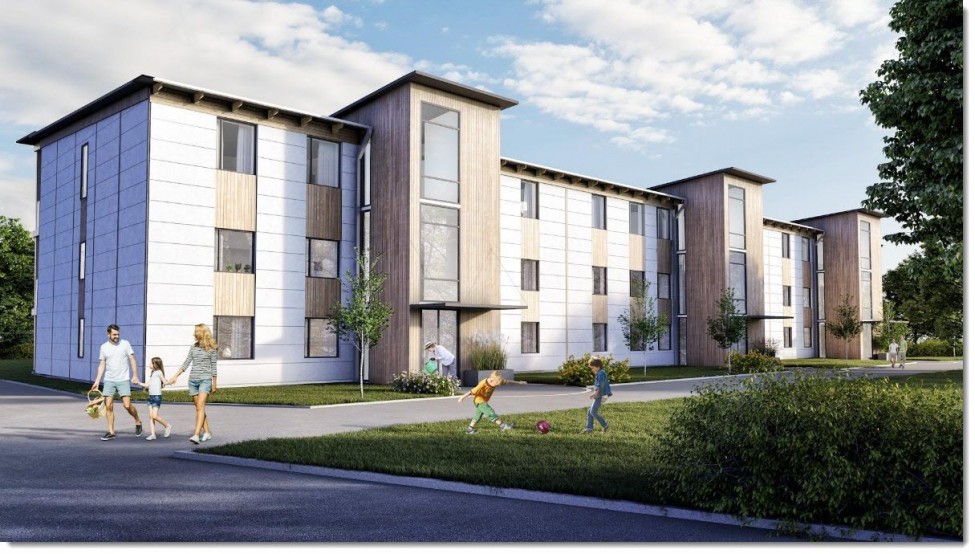
The world's first energy self-sufficient housing complex is located in Vårgårda, Sweden where a block of 30 flats now runs entirely on solar energy and stored hydrogen. This impressive accomplishment is the result of a Danish-Swedish partnership between Better Energy and Nilsson Energy.
The solar-hydrogen Vårgårda project in Sweden is a breakthrough in clean energy and sustainable building. When the complex is completed and fully operational, a total of 172 flats in six housing blocks will be capable of operating completely free from external energy sources. Residents will be 100% independent and disconnected from electrical power grids, outside heating sources and fluctuating electricity prices. The rooftop solar PV panels alone will produce enough energy to meet their power needs year-round.
The challenge of renewable energy is that energy production and consumer demand do not always match. To overcome this challenge, a long-term storage solution is needed to provide electricity and heat when the sun shines less. By storing surplus energy in the form of hydrogen, solar-hydrogen projects offer a 100% clean, green, long-term storage solution.
Brilliantly simple
Hydrogen gas has the largest energy content of any fuel, which means that a small amount of hydrogen can store a large amount of energy. Hydrogen is also chemically stable and can store energy for long periods of time. In a solar-hydrogen system, energy from the sun can be harnessed and stored for later use, producing only oxygen and pure water as waste products.
“Ironically, our solution involves the limitless energy of the sun and the simplest, lightest, most abundant element on Earth, hydrogen. Resources and technologies right in front of us. We’re just combining them in a new, clean and extremely efficient manner. It’s brilliantly simple,” explains EVP Sales Nicolai Faaborg Andresen, Better Energy.
Electricity production from hydrogen is not new, but Better Energy and Nilsson Energy are combining their engineering know-how in the world's first large-scale system with a renewable energy source.
Off-grid power, step by step
Solar panels on the Vårgårda housing block soak up sunlight and convert it into energy. Surplus energy passes through an inverter and is collected in a battery that is used to power an electrolyser. The electrolyser produces hydrogen gas by splitting water molecules into the base elements of hydrogen and oxygen.
The hydrogen is compressed to 300 bar and stored in a pressure tank. When energy is needed, the hydrogen can be converted cleanly and efficiently back into electricity by way of a hydrogen fuel cell. The only emissions from the system are oxygen and pure water.
Benefits
This solar-hydrogen solution offers many advantages not only for urban smart cities and housing but also for remote communities and locations. Summer’s overproduction is stored as hydrogen for use in the winter months – year-round, 24-hour access to the power of the sun.
“There is no doubt that solar-hydrogen solutions can help decarbonise future energy systems. Hydrogen storage enables renewable energy integration and increases system resilience,” asserts CEO Rasmus Lildholdt Kjær, Better Energy.
FAST FACTS
Benefits of solar-hydrogen (Better Energy Solar System and Nilsson RE8760) solutions include:
– Zero carbon energy, zero unwanted emissions or byproducts
– Long-term storage and flexible response to demand
– High reliability of power, even under variable and extreme weather conditions
– Reliable power generation for remote locations, critical healthcare institutions and industries
– Low maintenance and operating costs
– Quiet operation, low noise pollution
Read the most up to date Fuel Cell and Hydrogen Industry news at FuelCellsWorks




